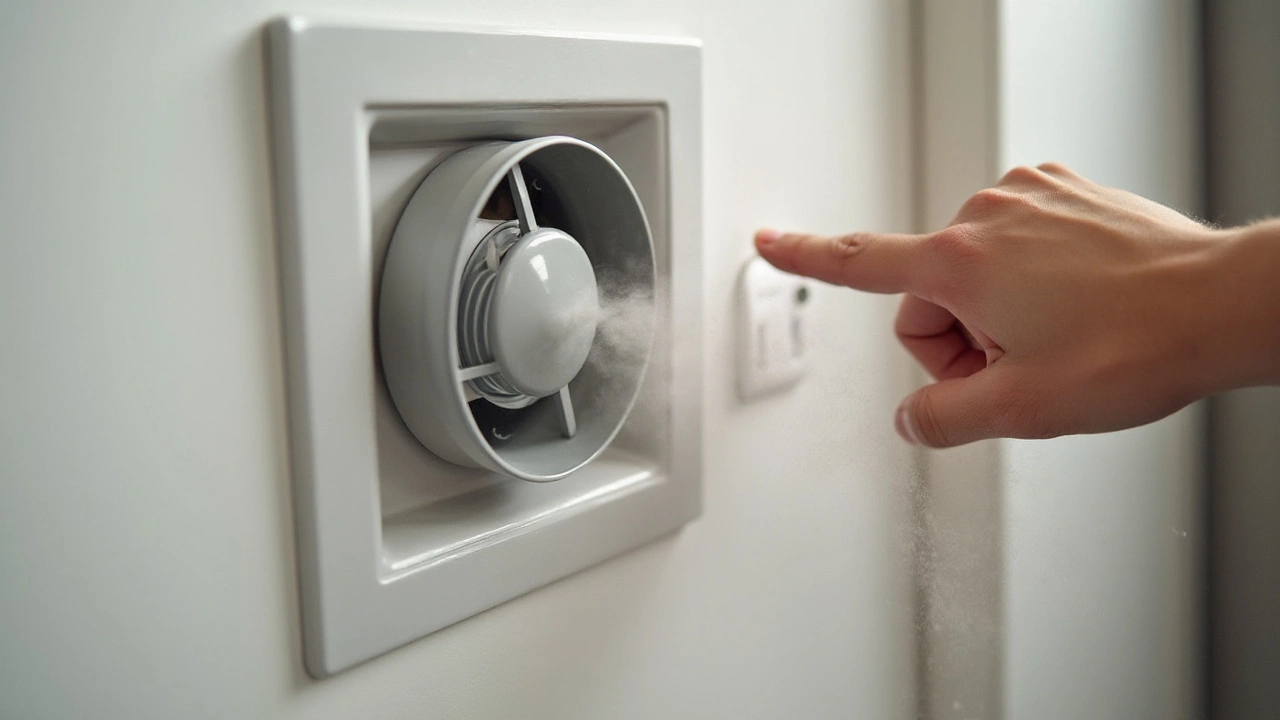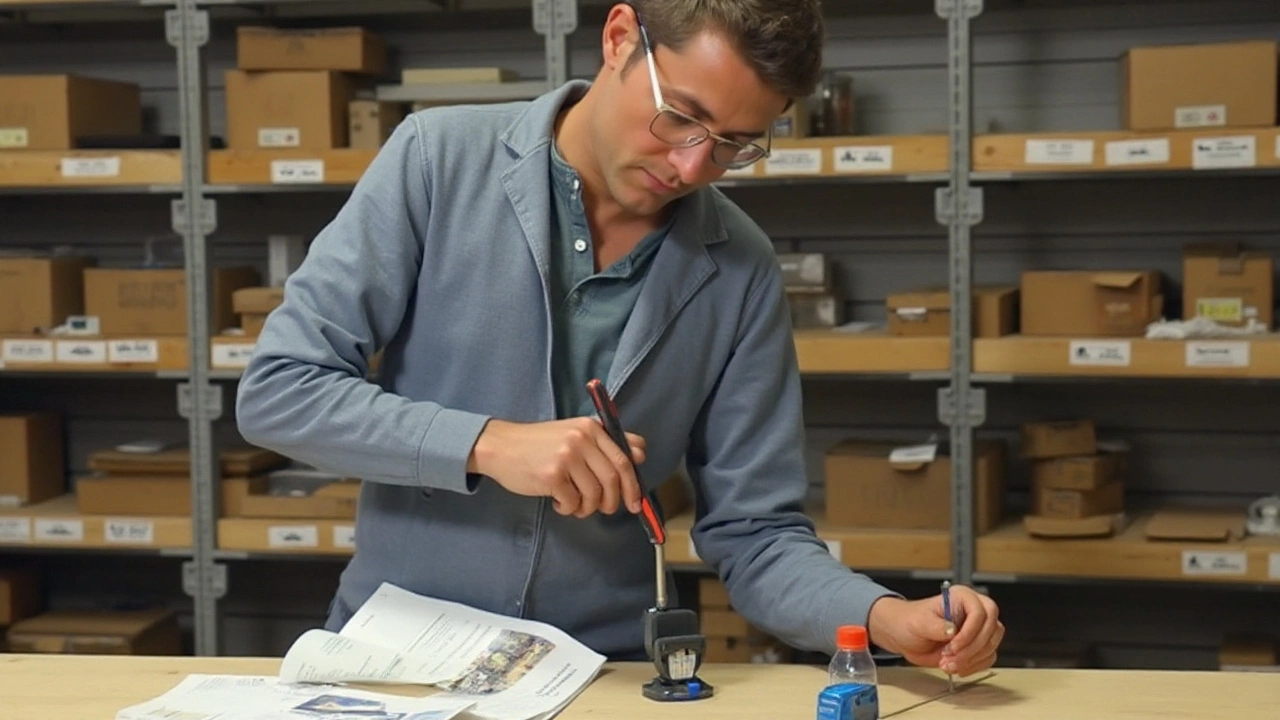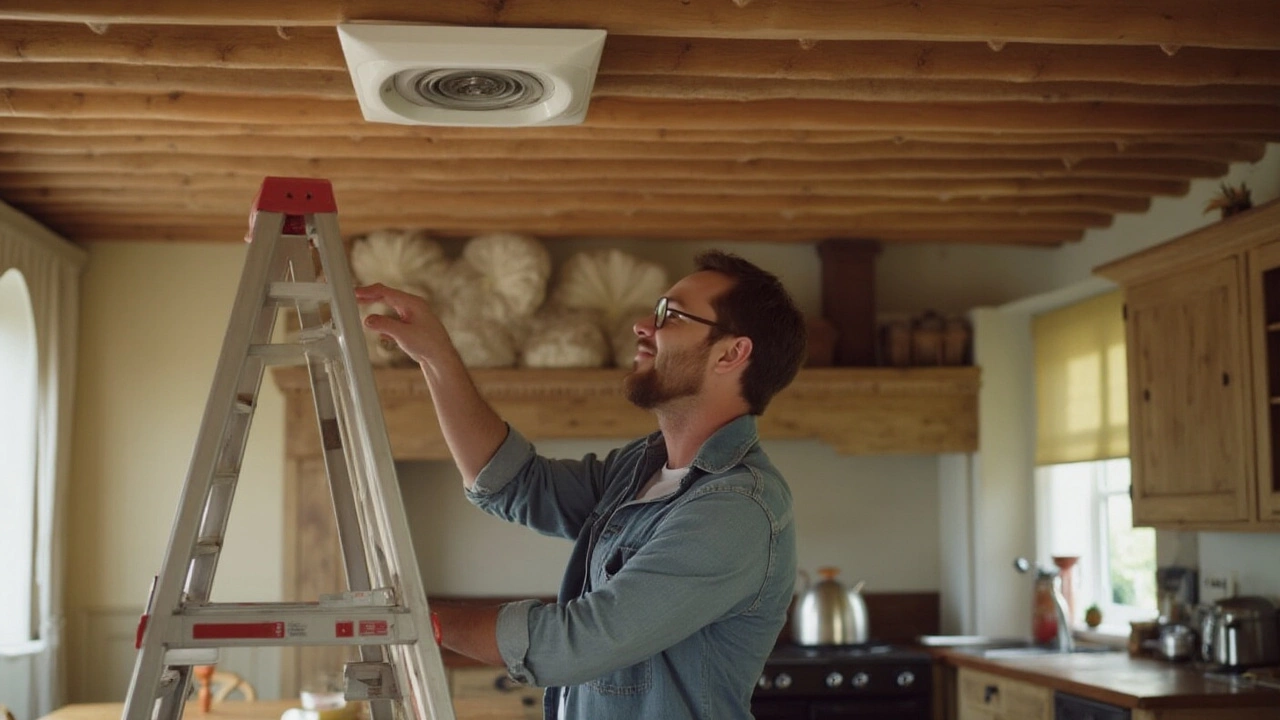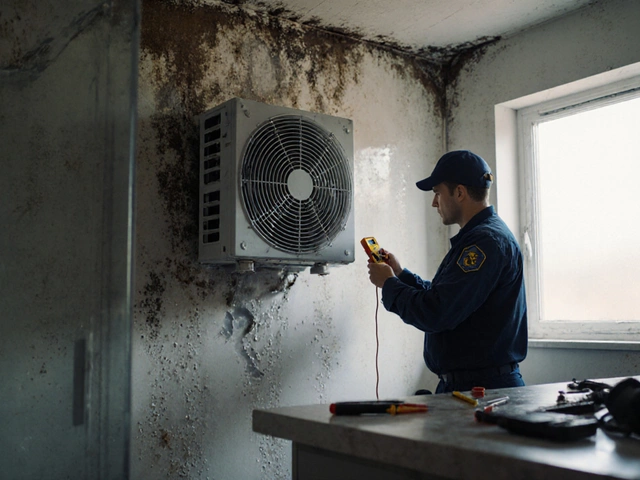Extractor fans are often unsung heroes in our households, quietly pulling out unwanted moisture, odors, and providing fresh air circulation. But how do we know when they're working as they should?
Before jumping to conclusions, it's crucial to conduct a few straightforward checks. You might notice visible dust and dirt buildup or hear concerning noises that signal a deeper issue. Simple testing methods can help confirm whether your fan is moving air efficiently.
With a few maintenance tips, you can extend the life of your fan significantly. However, sometimes a professional touch is required.
- Identifying Visual and Audible Signs
- Simple Tests to Confirm Efficiency
- Maintenance Tips for Longevity
- When to Call in the Professionals
Identifying Visual and Audible Signs
When it comes to recognizing if your extractor fan is up to the task or needs a bit of TLC, the first course of action is to rely on your senses, particularly sight and hearing. A lot of times, issues with the fan are visible to the naked eye. Begin by observing the area around the fan. Is there a buildup of dust or grease collecting on the blades or grille? This accumulation is not only unsightly but can impede airflow, causing the fan to function less efficiently. The fan's cleanliness is directly proportional to its performance, so keep an eye out for any dirt which might obstruct its operation.
Aside from visual cues, your ears can offer counsel too. Extractor fans naturally emit a certain level of noise when running, which is often described as a mild hum. However, if you notice it has shifted to a grinding or rattling sound, it could signify deeper issues such as a loose part or a weary motor. Be alert to changes in sound volume as well — an overly quiet fan, unexpectedly, might not be working at all. Believe it or not, noise can be a friend in disguise, alerting you to potential issues before they become costly repairs.
Maintaining regular vigilance over these signals can save you from surprise breakdowns, but don't just take it from me. As highlighted by home maintenance expert Tim Carter,
"You can't fix what you can't see, so always be on the lookout before problems become really evident. A keen eye and a sharp ear are your first line of defense against fan issues."His insights remind us of the importance of early detection when safeguarding your fan's longevity and reliability.
The age of your fan also plays a role in what you might discover during these checks. Older models may have parts that wear out faster, leading to a more pronounced need to monitor for these signs. It might be wise to keep a maintenance log for your fan, noting any changes in performance or cleanliness over time, similar to how you might track car maintenance. This not only helps in scheduling regular cleanings but aids when discussing past issues with a professional, should the need arise.
Your vigilance may also uncover non-physical signs, such as increased energy bills. A sluggish fan that doesn't run efficiently might draw in more power without you realizing it. By keeping track of your energy use, you can often correlate seemingly unrelated issues back to your faithful yet weary fan. Consider this; a fan operating efficiently should create a pressure difference, noticeable when you place a piece of tissue paper near the grille – it should stay in place due to the fan's suction. These subtle indicators provide clues, helping you maintain a comfortable and efficient living environment.
Knowledge of what visual and audible signs to look for gives you the advantage over time. In this instance, enlightenment about one’s extractor fan truly helps keep the atmosphere clean and healthy. Tracking both indoor air quality and fan performance could even be linked, offering insights into better home living practices. Perhaps, adopting such practices could stave off unwanted repairs, maximizing the fan's lifespan and sparing you from unnecessary headaches.

Simple Tests to Confirm Efficiency
When it comes to ensuring your extractor fan is working effectively, a few uncomplicated tests can head off potential issues before they escalate. First, there’s the tried and true method known as the 'tissue test.' It's simple: take a single square of tissue paper and hold it up to the fan grill while the unit is on. A functioning extractor fan should be powerful enough to hold the tissue against the grill without it falling. If it's not sticking, you may need to check for clogs or blockages that hinder airflow.
Next, a tip that professionals advocate is listening carefully when the fan is operational. A healthy extractor should produce a consistent, low hum. If you hear rattling, squeaking, or grinding noises, it could signal everything from loose parts to worn-out bearings. If you’re comfortable, you can open the fan cover to inspect for any obvious issues. However, if you’re not experienced in servicing appliances, it might be best to consult a professional.
You can also conduct a more technical check of air movement using an anemometer, a tool that measures the airspeed. Although not common in every household toolbox, this device provides precise data about how much air your extractor fan is moving. Typically, a good extractor fan should move around 60-80 cubic feet of air per minute (CFM) for a small room. For larger spaces, this number should be higher. Such accuracy can truly determine whether the fan is performing at its designated capacity.
If you prefer a visual method, inspect the exhaust ducting for obstructions. Occasionally, a bird’s nest or accumulating debris can severely hinder the fan’s function. If you like, check for this by removing the duct cover and using a small mirror to get a better look inside, or even better - using your smartphone to take a quick picture if the duct is tricky to access.
"Regular maintenance and simple tests can significantly enhance the longevity and efficiency of your extractor fans," says Mary Sanchez, a noted home repair expert from House Fix Solutions.Understanding how to carry out these DIY tests empowers you to keep your home's air quality in check without professional intervention. Keeping track of these details will give you peace of mind knowing your living environment remains comfortable and healthy.

Maintenance Tips for Longevity
Extractor fans play a crucial role in maintaining air quality and reducing moisture build-up in our homes, yet many people neglect regular maintenance, leading to reduced efficiency and shorter lifespan. Proper care is surprisingly straightforward, ensuring your extractor fan performs optimally for years. Begin by switching off the power supply to the fan before disassembling any components, which prevents accidents. Cleaning is the first step; remove accumulated dirt and dust, particularly from the fan blades. Many fans have removable covers that can be detached with simple tools, giving you access to these areas. A gentle wipe with a damp cloth can make a world of difference, significantly improving air flow.
Next, pay close attention to the fan's filter if it has one. Over time, filters can get clogged, heavily impeding the fan's ability to extract air efficiently. Depending on the manufacturer's instructions, you might need to replace or wash the filter. Make sure you do this regularly, perhaps every three months. It’s noteworthy that according to Consumer Reports, "Fans with cleaned filters can operate up to 30% more efficiently compared to those with clogged filters." This statistic highlights the compelling relationship between maintenance and efficiency.
It's equally important to inspect the ductwork that carries air from the fan to the outside. Ensure there's no blockage or loose connections that might cause leaks. An easy check involves feeling around the vent cover outside for airflow as the fan operates – weak airflow may mean a blockage. An annual examination should be sufficient if everything else appears in order. Sometimes, external vents can become a haven for pests; consider adding a screen or grill to prevent this.
Each year, it's advisable to dab a bit of lubricant on the fan motor shaft. This simple action can fend off wear and tear, prolonging the life of your fan. Just a drop of oil should do the trick in keeping it running smoothly. Lastly, ensure all screws and mounting brackets are tight, reducing extraneous noise during operation.
If regulatory changes or advancements in technology occur, regularly consulting your fan's manual and the manufacturer’s website can provide guidance. Consider these tips a checklist for extending the longevity of your fan while keeping your home well-ventilated and healthy. Remember, consistent care can save you money in the long run and keep your ventilation system in top shape.

When to Call in the Professionals
The moment you realize your extractor fan isn’t pulling its weight, it can feel frustrating, especially if you're relying on it for keeping the air in your home fresh. There are times when a DIY approach just won't cut it and reaching out to a professional is the best path forward. While minor issues like cleaning grime can be managed with elbow grease and a bit of patience, sometimes the problem roots deeper. If your fan simply refuses to switch on, or there's a pesky hum that’s more unsettling than usual, it’s a sure sign to pick up the phone. Electric faults or wiring issues are not to be toyed with, as they might not only render the fan dysfunctional but also pose safety hazards.
There's also the matter of efficiency. Despite regular cleaning and maintenance, your fan might still underperform. This might manifest in stubborn humidity clinging to your bathroom long after showers, or persistent odors in your kitchen. At this point, a professional can conduct precise air flow testing with specialized equipment to determine whether your fan is indeed up to the task. They’ll check for potential blockages in the ducts or issues with the mounting that might not be visible to the untrained eye. Moreover, professional technicians have the right tools and spare parts handy, making the process smoother and more efficient at tackling any misbehaving pieces.
Professionals might also help when it comes to upgrading to a new model. If your current fan is hopelessly beyond repair or doesn’t perform at desired levels, a seasoned hand can ensure you choose the right model based on your home's layout or specific requirements, thus saving you precious time and resources. They’re adept at understanding how varied ventilation systems integrate with different spaces. From enhanced energy efficiency to noise reduction features, their experience can lead you to optimal choices that DIY might not capture.
Beyond technical prowess, there’s peace of mind to consider. After all, bringing in experts means the work often comes with guarantees or warranties. This means invaluable assurance in case complications arise post-repair or installation. The long-term benefit of this security outweighs any initial hesitance regarding professional fees. As often quoted from Bob Vila, an authority in home improvement,
"When expertise backs the promise, risk diminishes and value truly emerges."This rings particularly true with fans because they impact a crucial aspect of home living—air.
Last but not least, think about compliance with regulations. Depending on where you live, stringent codes dictate installation specifics or minimum performance metrics. Compliance assures you’re not only safe within your walls but also legally sound. Experts, familiar with local building codes and regulations, bring invaluable knowledge to the table, helping you dodge any pitfalls linked to non-compliance. Trusting a professional could be your best investment, ensuring your extractor fan’s longevity, security, and efficiency are checked off that list next to reliability and peace of mind.





